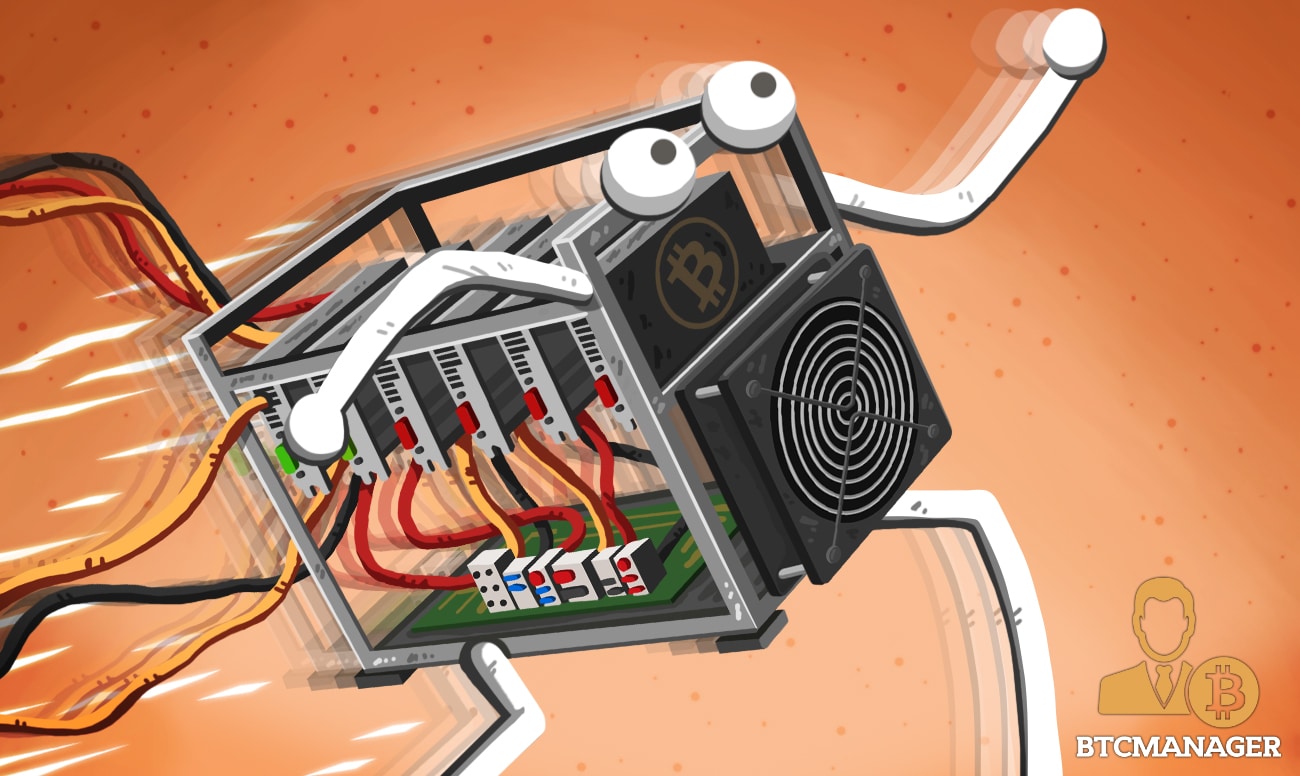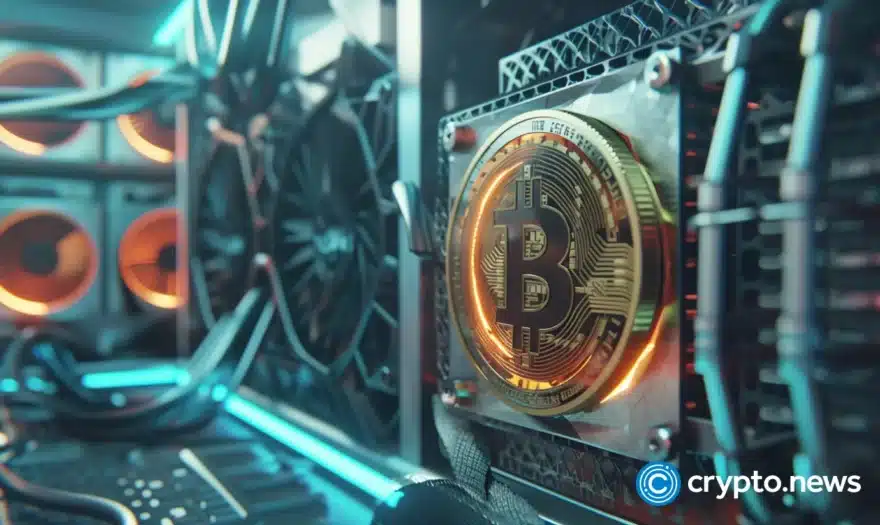ASICs vs. Everyone: Who Will Win the Crypto Mining Arms Race?

Developers building public blockchains are faced with slowly losing the war against Application-Specific Integrated Circuit (ASICs). ASIC-resistant developers are facing an eternal “cat and mouse” chase in which some have claimed they may have already lost.
Drawing from a post on Medium by Derek Hsue, in this article, BTCManager will discuss the pros and cons of ASIC-resistant implementations and ultimately answer the question: Should crypto keep fighting ASICs?
Table of Contents
An Endless Battle
Developers working on Proof-of-Work (PoW) blockchains are presented with an enormous challenge: Bitmain, the well known China-based cryptocurrency mining hardware outfit currently holds a strategic monopoly over ASIC miner production.
Bitmain’s syndicate over hash power and its far-spreading tentacles are somehow nefarious to the ecosystem. This corporation endangers the space by making protocols vulnerable to censorship as well as implementing code changes as if they were ordered from a single central authority.
Avoiding this leads developers to implement ASIC-resistant protocols by using memory-hard consensus algorithms that render ASIC usage unprofitable.
While some developers implement minor changes in the code to deal with this issue, other developers look to solve the problem by completely abandoning the PoW consensus algorithm and turn to alternatives such as PoS, DPoS, or Threshold Relay. While intriguing at first, these solutions still fall short as they come with a host of other issues and allow for different vectors of centralization.
The Pros and Cons of ASICs
Despite being seen as an obstacle, ASIC networks also have specific benefits and are often more efficient than ASIC-resistant systems. This is mainly because of the energy efficiency and the security ASICs bring to the network. In the end, a network that supports ASICs is much more expensive to attack than one that is secured by ASIC-resistant networks.
Since dedicated hardware is designed to be efficient, as well as delivering much more hash power, it can also provide more security. These devices are built for one thing only, are much more reliable than GPU’s, and establish an orthogonal industry for miners to specialize, professionalize, and scale up their businesses.
As these networks are utterly dependant on large chipmakers, such as Bitmain, these producers command significant market shares and threaten competitivity within the sector.
If the ASIC manufacturing industry was a level playing field there wouldn’t be a need for ASIC-resistant networks as the market would have more competition and easily allow new players to enter.
Currently what’s happening is that Bitmain is crushing competitors. But if healthy Bitmain competitors begin to appear other cryptocurrencies such as ether (ETH) or monero (XMR) might be forced to move into ASIC-friendly protocols.
The Rise of ASIC-resistant networks
The PoW consensus mechanism was made famous by Bitcoin and allowed for millions of computers around the world to agree on a shared history without having to rely on a central authority or a third party. In this scheme, anyone can contribute to the network by mining, thus making the system decentralized and more secure.
Satoshi Nakamoto wrote in the Bitcoin Whitepaper:
“As long as a majority of CPU power is controlled by nodes that are not cooperating to attack the network, they’ll generate the longest chain and outpace attackers.”
Over time, the price went up along with the mining profitability thus creating an arm’s race for the most powerful computers. In 2009 anyone could mine BTC with a standard CPU, but in 2010 GPU mining emerged, and a while after FPGAs (Field-Programmable Gate Array) in 2013, ASICs hit the market.
With GPUs, miners start to cluster in mining pools, but as soon as the new hardware is released huge data centers begin to set up their operations wherever they find the cheapest electricity providers. Satoshi’s original notion of anyone mining with their device, whether CPU or GPU, becomes a thing of the past.
Once ASICs hit the market, Bitcoin mining began operating less and less like a decentralized project, as it was no longer profitable to mine the cryptocurrency on a personal computer. Since then, the mining racket began to be controlled by large mining companies that have the resources to build efficient and competitive ASICs while also controlling the supply of the new hardware.
As a result, ASIC concentration ended up in pools controlling more than 51 percent of the hashrate.
As an answer to Bitmain’s monopoly, project developers parted ways with ASIC-friendly PoW algorithms and developed their own “ASIC-resistant” techniques.
The Downside of ASIC-Resistant Networks
Resistant networks make the use of ASICs unfeasible as ASICs become unprofitable in comparison with GPU or CPU mining. So, how do ASIC-resistant networks function?
ASIC-resistant network developers usually implement high memory usage tweaks on their protocols to prevent ASICs from running over the network.
It doesn’t mean that ASICs cannot be used to mine these algorithms. Instead, it becomes much more difficult for ASICs to operate efficiently. ASIC-resistant algorithms decrease the gap in performance between GPUs and ASICs. Since GPUs present a wider array of computation flexibility, they can quickly adapt to small changes in the code without losing efficiency.
Alternatively, manufacturing specific hardware to mine for ASIC-resistant algorithms becomes too expensive to attract investment. As the process of producing ASICs for specific protocols requires a large amount of initial investment, it fails to catch the eye of investors who prefer to keep betting on the development of Bitcoin mining ASICs.
Going for ASIC-resistant networks would be the option that makes more sense because GPUs are accessible to anyone. Commodity hardware has a vast range of applications too, and with a more distributed production and delivery system, it puts the democratic features of mining back into participants’ hands.
This is why proponents of ASIC-resistant networks argue that ASIC commoditization is impossible. This argument poses that few corporations will inevitably perpetuate their domination over mining. That being said, ASIC-resistant developers firmly cling to the notion that ASICs are incompatible with a fair and distributed mining process as they are vulnerable to monopolization by big corporations.
GPUs are more flexible than ASICs so they can be used to mine many different ASIC-resistant algorithms, meaning that there are many more attack vectors than one would find in an ASIC network. While attacking an ASIC-friendly network is expensive, the same is not necessarily true when it comes to GPU mining. In theory, depending on the targeted chain, an attacker holding enough GPUs could be able to perform a 51 percent with very low overhead.
Risks of Forking away from ASICs
ASIC-resistant developers usually apply changes to the code via a hard fork to protect against ASIC mining. However, this is not sustainable in the long run. Projects like Vertcoin, for instance, continue to fight ASICs by constantly implementing minor changes to the code. But this is likely to be unsustainable.
Moreover, these constant smaller changes give a centralized influence to developers which in turn render ASIC-resistant networks unreliable and unhealthy
Constantly hard forking ASICs carry many risks:
- New bugs or exploits can appear, whether accidental or malicious.
- Hard forks will scatter hash power, creating more orphans and decreasing the overall security of the network.
- GPU mining is also susceptible to economies of scale and monopolization by companies like Bitmain.
- It is becoming feasible to implement more flexible hardware that can adjust to small changes.
The Unlawful Mining Market
If a mining company feels threatened, it can try to boycott the implementation of changes that go against their interests. An example is ASICBoost. When the SegWit Bitcoin soft fork was proposed, Bitmain strongly opposed to it as it would invalidate their use of covert ASICBoost, enabling them to prop up their mining efficiency around 20 percent.
In another move, Bitmain released Monero machines, knowing that the developer team would fork away. The company did the same with Ethereum miners, and Ethereum is supposed to begin the transition to Proof of Stake (PoS), which will turn these machines obsolete. But if this happens, Bitmain will likely support a new hard fork to a new chain or miners putting their ASICs to work with Ethereum Classic. After that, they could switch back and forth between Classic and the new chain, to maintain profitability.
ASIC Commoditization: Possibility or Utopia?
Currently, the market is unbalanced due to Bitmain’s dominance. But in the future, new competitors may emerge, and the market direction may turn ASICs into a commodity. The term itself refers to a marketplace in the future, where different manufacturers producing ASICs of comparable power and price range coexist.
The notion implies that no manufacturer would have an advantage over others and thus the market would be balanced. This would be a slow and gradual process that would democratize access to ASIC hardware by pushing down the price over time.
According to the Medium post, Dave Collins, Decred’s co-founder and lead developer, stresses:
“When you embrace ASICs and intentionally make them efficient and cheap, they eventually become commodity hardware over time as they approach the thermodynamic limit and, as such, not only does it become infeasible for a single entity to conduct the aforementioned attack, it also ultimately ends up in more decentralization after the initial inevitable centralization phase while the arms race is going on.”
It is possible that increased competition and decentralization in the Bitcoin mining space may appear due to:
- Increased geographical distribution. This will happen mainly due to government crackdowns and regulation restrictions, forcing mining operations to move to more friendly zones where they can also find cheap electricity.
- Chipmakers such as Intel and Samsung have now entered the space.
Even before Bitmain hit the scene back in 2013, there were ASICs producers such as Avalon, Butterfly Labs, and Bitfury already in the field.
With Samsung and Intel entering the game, Bitmain may finally find competitors powerful enough to change the stakes. Even if mining becomes more distributed across locations and producers, this likely won’t create a healthy and decentralized mining space.
ASIC commoditization is not a utopian idea. It is merely an issue that is entirely dependent on the will of foundries, miners, and other stakeholders in the ecosystem. There is no easy way out of this paradox, but keeping up a fight against ASICs is probably not the best option.
Embracing ASICs is inevitably the route to take even if the space needs to go through a certain period of centralization.
ASIC-resistant developers are facing a war that they will inevitably lose, so the wisest thing to do at this point should be as the old saying goes, “if you can’t beat them, you might as well join them.”













